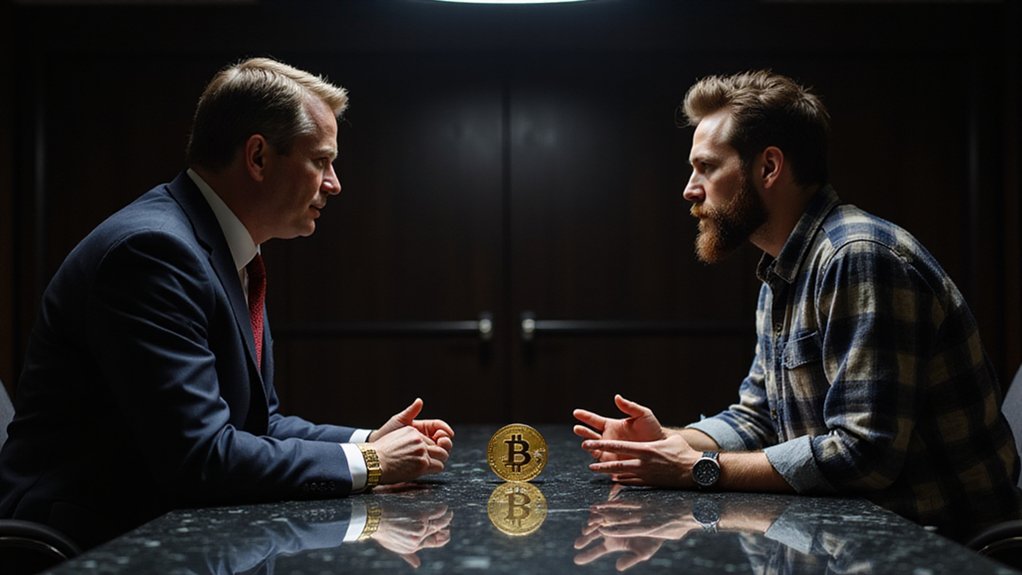When a billionaire who has amassed nearly 581,000 Bitcoin decides to publicly challenge America’s most influential podcaster to a cryptocurrency conversation, the intersection of digital assets and mainstream media reaches a particularly fascinating inflection point.
Michael Saylor’s May 31st invitation to Joe Rogan—delivered with characteristic directness via X—represents more than casual celebrity networking. The MicroStrategy co-founder, whose firm controls approximately $60.47 billion in Bitcoin holdings, effectively threw down a gauntlet that could reshape cryptocurrency discourse for millions of listeners who might otherwise dismiss digital assets as speculative nonsense.
The proposal struck an immediate nerve within crypto circles, where figures like The Bitcoin Therapist proclaimed the potential interview “internet-shattering.”
Such hyperbole might seem overwrought until one considers the arithmetic: Rogan’s audience multiplied by Saylor’s evangelical fervor for Bitcoin creates a formula that could genuinely move markets. Brandon MacDougal‘s admission that he would watch his first Joe Rogan podcast specifically for Saylor speaks to the gravitational pull of this proposed encounter.
The mathematical convergence of Rogan’s reach and Saylor’s Bitcoin evangelism represents a potential market-moving media moment.
Rogan’s decade-long engagement with Bitcoin topics—including multiple conversations with Andreas Antonopoulos and his October 2023 musings about Bitcoin as “the most fascinating digital asset”—suggests receptive ground for Saylor’s institutional perspective. The podcaster’s characterization of Bitcoin as potentially the most “universal viable currency” indicates an existing philosophical framework that Saylor could exploit masterfully.
The stakes extend beyond entertainment value. Saylor’s recent $427 million Bitcoin purchase demonstrates unwavering conviction in his thesis that Bitcoin represents a settlement layer with trillion-dollar potential. His strategy of continuous capital raising for additional purchases positions him as perhaps the most credible institutional advocate for Bitcoin’s long-term viability.
With Bitcoin’s market cap recently surpassing $1.7 trillion and projections suggesting the overall cryptocurrency market could reach $8 trillion by 2025, the timing of such a mainstream conversation could prove particularly impactful.
Should Rogan accept this challenge, the resulting conversation could achieve something remarkable: translating complex monetary theory and digital asset mechanics into accessible discourse for mainstream audiences. The Bitcoin community’s expectation that Saylor could effectively “Bitcoin pill” Rogan’s massive audience reflects broader hopes for cryptocurrency legitimization through popular media channels.
Whether this digital-age David meets Goliath scenario materializes remains uncertain, but the mere possibility has already generated substantial anticipation across both traditional finance and cryptocurrency communities.









